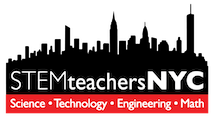[vc_row][vc_column][vc_empty_space][vc_custom_heading text=”OVERVIEW” font_container=”tag:h4|text_align:left|color:%23cb2222″ google_fonts=”font_family:Lato%3A100%2C100italic%2C300%2C300italic%2Cregular%2Citalic%2C700%2C700italic%2C900%2C900italic|font_style:700%20bold%20regular%3A700%3Anormal”][/vc_column][/vc_row][vc_row][vc_column width=”2/3″][vc_column_text]
Computational Modeling Physics First (CMPF) is a research program exploring how the learning of Bootstrap enhance teachers’ skills and identity as Computer Technology (CT) learners and as integrated CT/physics teachers, and also how engaging students in the learning of integrated Bootstrap/Modeling physics enhance students’ CT skills and identity, while also improving performance in physics.
The aim of the research is to develop a method for teaching computational thinking to 9th graders in the context of an existing 9th grade science course (Physics First), while creating curriculum resources to support this learning goal. We are finding synergies that could mean that students will understand the physics concepts better, learn key concepts of computer science and programming, and gain experience with putting their knowledge to practical use.
[/vc_column_text][/vc_column][vc_column width=”1/3″][vc_single_image image=”10319″ img_size=”full”][/vc_column][/vc_row][vc_row][vc_column][vc_empty_space][vc_custom_heading text=”Problem Statement” font_container=”tag:h4|text_align:left|color:%23cb2222″ google_fonts=”font_family:Lato%3A100%2C100italic%2C300%2C300italic%2Cregular%2Citalic%2C700%2C700italic%2C900%2C900italic|font_style:700%20bold%20regular%3A700%3Anormal”][/vc_column][/vc_row][vc_row][vc_column width=”2/3″][vc_column_text]We are tackling the current lack of good, contextualized opportunities for students to learn computer programming in NY State middle and high schools, and the lack of training for teachers to teach programming to students in their science courses.
The teachers in our workshop are also facing a variety of problems that stand in the way of them using all of the materials as designed. These problems include: teaching assignments in other fields than physics and/or physical science, lack of advance notice about what they will be teaching in the coming academic year, mandated curricula and assessments that make fully implementing Modeling Instruction and/or incorporating computer coding difficult, administrators who lack an understanding of science teaching and learning and are unable to support teachers in incorporating computer programming in their science courses.
Learn more about the project through this blog entry [/vc_column_text][/vc_column][vc_column width=”1/3″][vc_single_image image=”10320″ img_size=”full”][/vc_column][/vc_row][vc_row][vc_column][vc_empty_space][vc_custom_heading text=”Research Team” font_container=”tag:h4|text_align:left|color:%23cb2222″ google_fonts=”font_family:Lato%3A100%2C100italic%2C300%2C300italic%2Cregular%2Citalic%2C700%2C700italic%2C900%2C900italic|font_style:700%20bold%20regular%3A700%3Anormal”][vc_column_text]Colleen Megowan-Romanowicz is a long time high school physics and mathematics teacher and Modeler from Sacramento, California who moved to Phoenix in 2001 to study Physics Education Research at ASU under the direction of David Hestenes. She completed her PhD in 2007 and after a one year post-doc with ASU’s Arts, Media and Engineering program in embodied and mediated learning, she accepted an appointment as assistant professor of science education. She landed an NSF grant in 2009 to create a middle school STEM Modeling MNS degree program modeled on ASU’s program for HS physics teachers. In 2011 she moved to a half-time research scientist position at ASU in order to take on the role of AMTA’s Executive Officer She retired from ASU in 2014 to devote her fully attention to AMTA. In 2016, Colleen ‘handed over the reigns’ to Jeff Hengesbach, and continues supporting AMTA as Research Fellow.[/vc_column_text][/vc_column][/vc_row]
